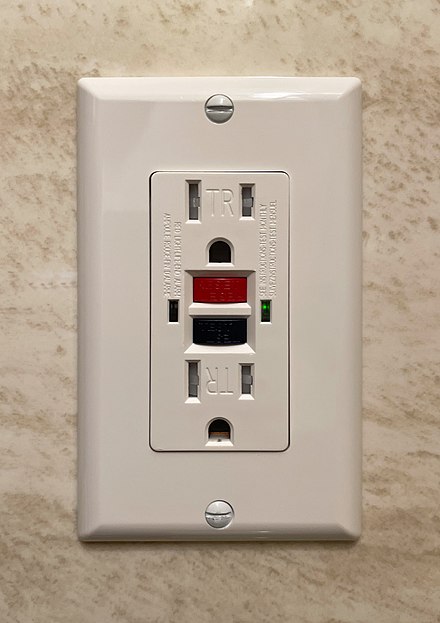
When it comes to electrical safety, safety outlets are crucial features in any home or building. These outlets are designed to prevent shock and electrocution by quickly shutting off the power in the event of an electrical short. While safety outlets are not required by law in all states, they are highly recommended as a safety measure and are often required by building codes in new construction. This article will explain how these safety outlets function, how to identify them (if you have them), and what to do if you have them or what to do if you don’t have them.
How Does A Safety Outlet Work?
These outlets continuously monitor electric currents for dangerous current fluxes and will quickly shut off the power in the event of a ground fault, or an excessive flow of electricity usually caused by damage to the wire. Safety outlets can prevent electrocution and reduce the risk of fires, making them essential for any household or workplace.
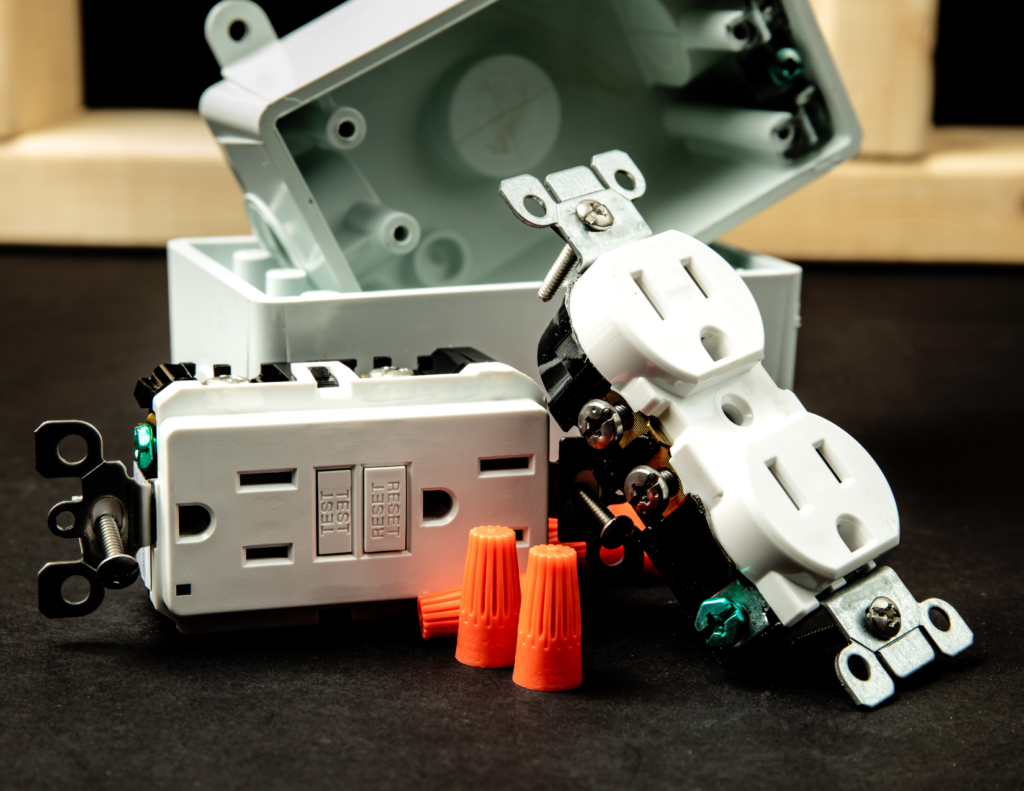
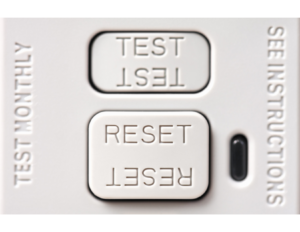
How To Identify A Safety Outlet
So how do you know if your outlet is a GFCI? One easy way is to look for the “test” and “reset” buttons on the outlet’s faceplate. If your outlet has these buttons, it is most likely a safety outlet. Another indicator is if a small flashing light appears when you push the test button. If you see this light, it means that the outlet is working properly. You can also check the label on the back of the outlet to see if it is marked as a GFCI outlet.
GFCIs can be installed in any room of the house, but they are most commonly found in kitchens, bathrooms, laundry rooms, and outdoor areas (including garages).
Types of Safety Outlets
1. Ground Fault Circuit Interrupter (GFCI) Protects From Shock
The most common type of GFCI is the ground fault circuit interrupter, which is designed to protect against electrical shocks caused by ground faults. Ground faults occur when there is a break in the circuit between the hot wire and the grounding wire, allowing electricity to flow through the earth instead of returning through the circuit. This can happen if a live wire comes into contact with a metal object or if the insulation on a wire is damaged.
2. Arc Fault Circuit Interrupter (AFCI) Protects From Fire
An arc fault circuit interrupter is similar to a GFCI, but it is designed to protect against electrical shocks caused by arcing faults. Arcing faults occur when electricity jumps through the air between two conductors, such as when a wire is damaged or frayed. AFCIs are required in some jurisdictions, but they are not as common as GFCIs.
3. Combination Arc Fault Circuit Interrupter (CAFCI) Protects From Fire & Shock
A combination arc fault circuit interrupter is an AFCI outlet that also provides protection against ground faults. CAFCIs are not as common as GFCIs or AFCIs, but they are becoming more popular as a way to provide comprehensive protection against electrical shocks.
What To Do If You Have Safety Outlets
It is always a good idea to test your safety outlets on a regular basis, to ensure they are working properly. This is because these types of outlets can wear out over time and may not provide the same level of protection as they did when they were new. By testing your outlets regularly, you can be sure that they are working properly and providing the best possible protection against electrical shocks and fire.
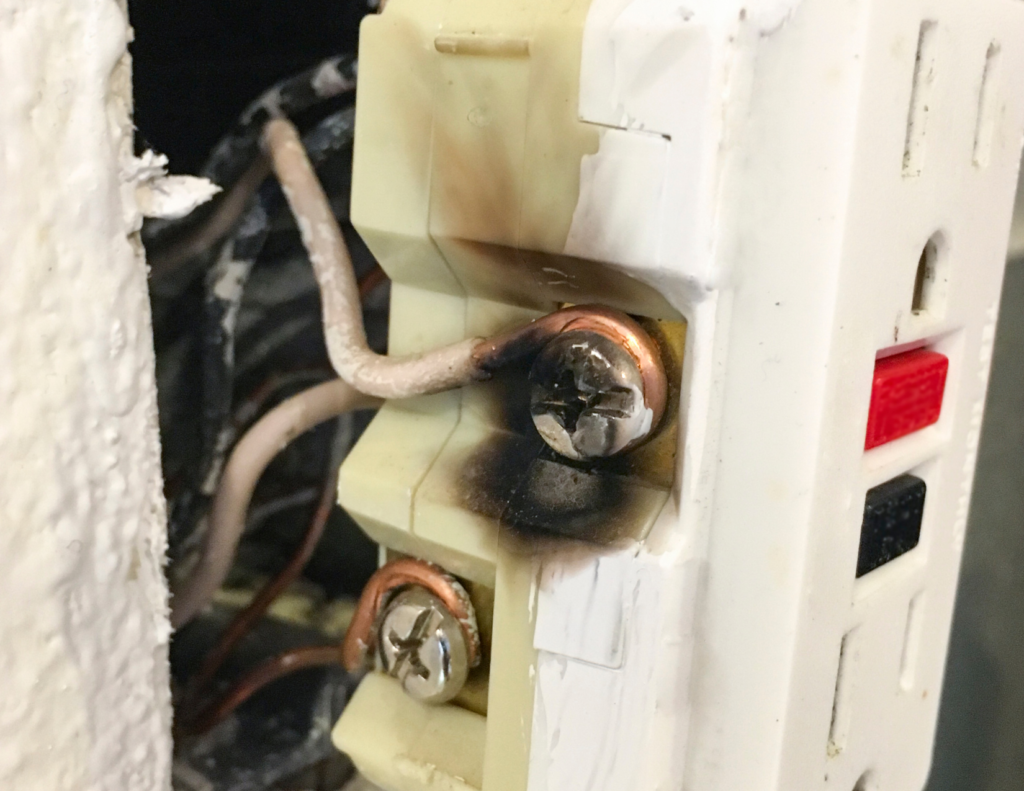
How To Test A Safety Outlet Outlet
To properly test a safety outlet, you will need a circuit tester or multimeter.
- Plug the circuit tester into the outlet and turn it on.
- Press the test button on the circuit tester. The power should go off.
- Press the reset button on the circuit tester. The power should come back on.
- If the power does not come back on, it likely needs to be replaced.
These buttons should also be easy to push and pop back out automatically. You can purchase a circuit tester at most hardware stores but a small electrical device (such as a curling iron) can work in a pinch. Just plug it in and hit the test button. If it cuts off the outlet is working if not it’s time for a replacement.
What To Do If You Do Not Have (Or Have Enough) Safety Outlets
If you don’t have a GFCI outlet in your home, you should consider installing one. They are relatively inexpensive and can be found at most hardware stores. It is recommended that you hire an electrician to install them for you to ensure they are installed correctly.
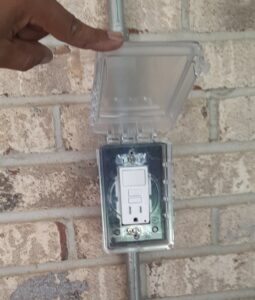


Give Us A Call To Test, Replace and Install Your Safety Outlets
Safety outlets are a vital but often overlooked component of your home’s electrical system. Without them, you and your family are at risk of electrical shock or house fire. Not all homes have safety outlets installed, and of those that do many of them do not have enough to truly protect residents from harm.
If you’re unsure about whether or not your home has adequate safety outlets, call us today and we can come out and inspect them for you. We can also install new ones if needed to ensure that you and your family stay safe from electrical hazards. Our prices are great and our service is stellar so don’t wait – give us a call today to schedule an appointment.
Protect Your Investment Property with the Right Insurance
If you are a landlord leasing your property, you must protect your investment from any
Forming A Virtual Neighborhood Watch
How to Create A Virtual Neighborhood Watch Since the pandemic, everything has gone virtual. With
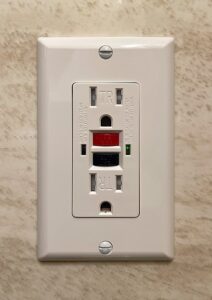
What You Need To Know About Safety Outlets
Safety Outlet Guide. Learn everything you ever wanted to know about GFCI’s and and AFCI’s and why you need them in your home.

Hawkins Property Management llc (dba HPM Electrical Services) is a licensed and insured Maryland Home Improvement Contractor specializing in Property Management and Electrical Repairs and Installations.
Hawkins Property Management LLC
DBA HPM Electrical Services
[email protected]
301-202-4352 Voice
301-246-8421 Text
Request An Estimate
See Our Prices
Proof Of Insurance
MD MHIC #102378
MD Master Electrician #14559
VA Master Electrician #2710064479
MD Real Estate License #653277
